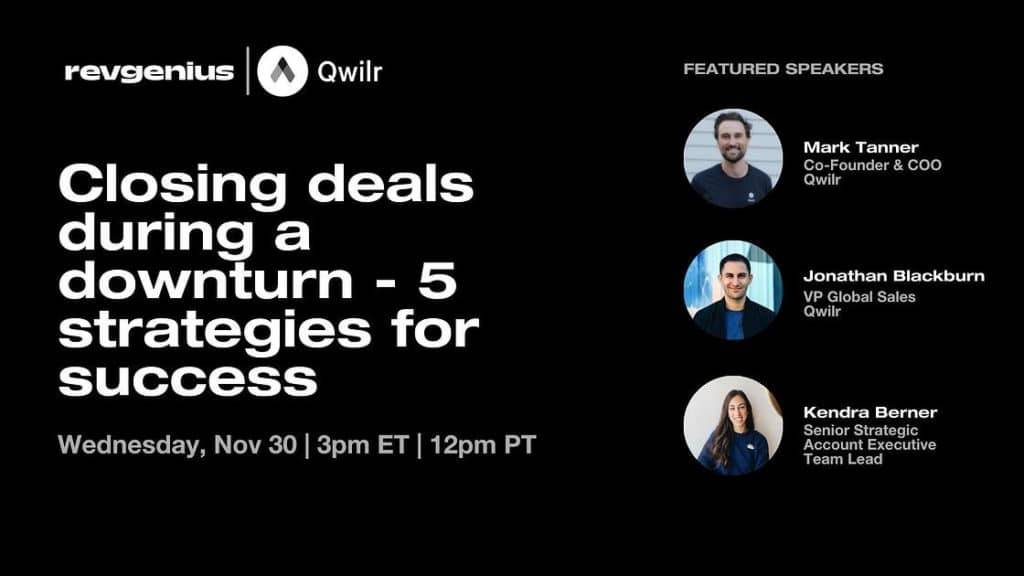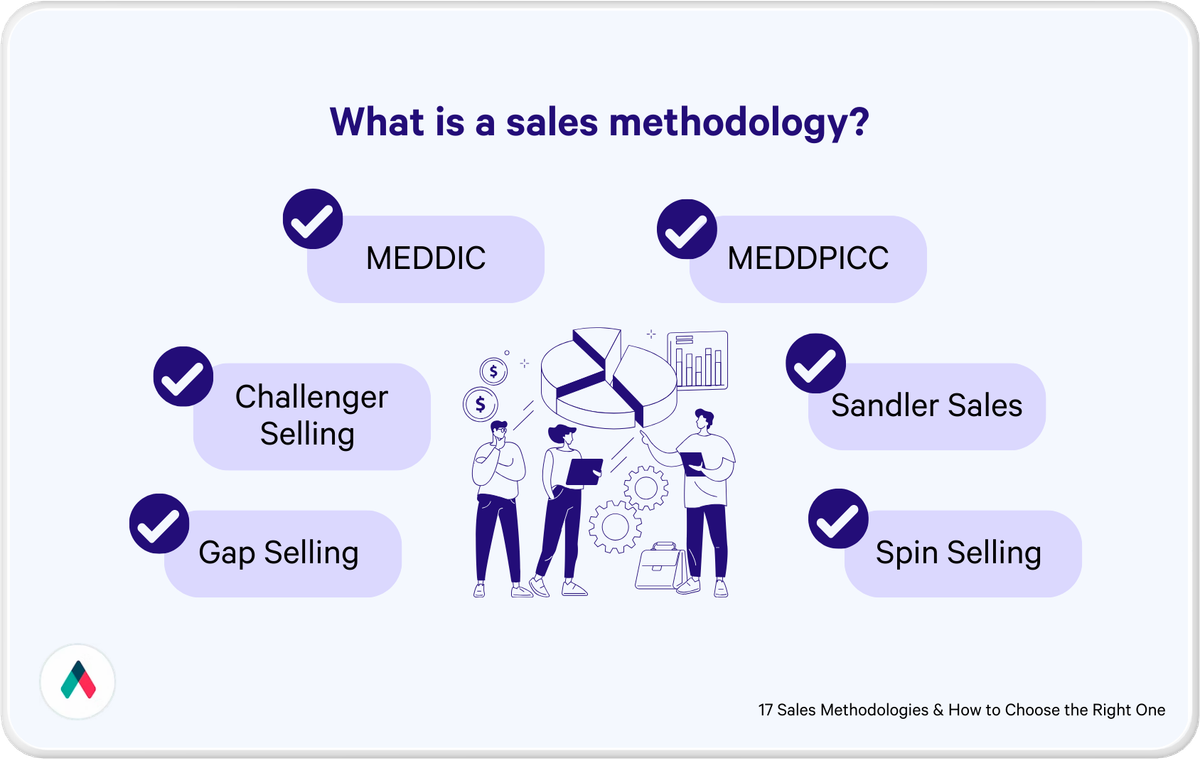Whether you're a sales professional pitching enterprise software or an SMB seller within a high-volume, product-led growth business, it's undeniable that product demos are a crucial touchpoint in the buyer's journey. This essential step of the sales cycle is where you demonstrate how your product seamlessly addresses your prospect's challenges.
However, with the overwhelming number of dry solutions out there, it's essential for your demo to be memorable and effective. In this piece, we won't merely tread on familiar grounds on how to run a demo; instead, we'll delve into six under-discussed strategies to ensure your product demo truly shines.
What is a product demo?
A product demo is a tangible presentation where you showcase how your product or service functions and addresses specific needs or problems of potential customers. It's the juncture in the sales cycle where you visually illustrate the connection between your solution and the prospect's issue. Despite its significance, it's also a phase where many can falter, particularly if the prospects have already seen similar demonstrations from your competitors. The challenge, then, is not just to present but to stand out, create an impression, and maintain momentum throughout the sales journey.
In the sections that follow, we'll explore six tips that will give your product demos an edge, positioning you not just as a seller, but as a collaborator, and ensuring continued interest and commitment from your prospects.
6 principles for effective product demos
#1: Put yourself in an awesome mood
One aspect of a demo that never seems to get enough love is what happens just before the demo.
Back when I was a canvasser for Oxfam roaming the streets of New York in search of monthly donations, I had my go-to pitch. Over the course of a year, I gave this pitch thousands of times. There were some variances here and there, but by and large, the words stayed the same. However, despite the pitch being relatively static, my results varied wildly.
There are of course a number of variables that go into the success of any canvasser, like their ability to stop people, their talent for rapport building, and their skill at objection handling. But I’d argue each of these variables is impacted by one primary source— the canvasser’s mood.
On days when I was in a great mood, canvassing was a breeze. People wanted to stop and talk to me, or at least that’s how it felt. On those days, it was more surprising when a person said no than when they said yes.
The same held true when I worked as a team leader. A huge part of the job revolved around finding ways to put my canvassers into a great mood. Games of ninja, team chants, and absurd challenges worked wonders and drove us to hit our goal with regularity. Sure, they were a tad embarrassing at times, but canvassing requires a bit of shamelessness.
While enterprise sales involve longer cycles and are less dependent on a person’s momentary mood, the impression you give during a demo lingers, and because of that, the mood you carry into a demo is critical. For that reason, it’s important to find activities that put you into the right headspace. Thankfully, there are countless ways of doing this.
My colleague Jomar meditates for a few minutes before each call. Others follow Amy Cuddy’s advice and strike a power pose. Our founder Mark smiles to put himself in a better mood. There are countless books dedicated to improving your psyche and many techniques to try — start experimenting and find something that works for you!
#2: A product demo is a conversation, not just a presentation
In his book Pre-Suasion, Robert Cialdini tells the story of Jim, a door-to-door fire alarm salesman who routinely outsold all of his colleagues. No one, however, could figure out how Jim did it. By all accounts, he seemed to use the same materials as everyone else, the same structure as everyone else, the same pitch as everyone else — but Cialdini did notice something out of the ordinary about Jim.
Every time he was in someone’s home, just before he started his sales pitch, he would say to the family: “Oh, I forgot some really important information in my car and I need to get it. I don’t want to interrupt the test; so, would you mind if I let myself out and back into your home?” The family would always agree, sometimes giving him a key.
Jim managed to “forget” this information every time, and ask to go out and get it at the exact same moment in his pitch. When pressed for why he did this, Jim said, “Think, Bob: Who do you let walk in and out of your house on their own? Only somebody you trust, right? I want to be associated with trust in those families’ minds.”
This trick worked brilliantly for Jim. However, most of us work virtually now, and I don’t expect exiting and returning to a Zoom room will have quite the same effect. One simple thing you can do, though, is to treat your demo as more of a conversation rather than a presentation.
Far too often I see reps go into “sales mode” during a demo, talking endlessly at their prospects. When it's only you talking, it places you into the prospect’s mind as an “account executive trying to sell me something.” While accurate, it’s not the most persuasive place to be.
It’s much better if you can position yourself as a collaborator working with the buyer on a shared problem — because that is what a product demo should be. One way of doing this is to encourage your prospects to drive the conversation. Don’t worry though, you can still lead them along the way by asking the right questions.
#3: Ask heaps of questions during the product demo
Questions are your most powerful tool. Most reps are great at asking questions during the discovery call, but sometimes forget about them during the product demo when they can be leveraged to an even greater extent.
You can do this by asking positively-charged questions that prompt your prospect not only to agree but to articulate in their own words how a certain feature will help them. Here are a few I’ve found to be both simple and powerful in my demos:
- Does this seem like it’d be helpful?
- Do you think Feature X solves Problem Y?
- How do you think you’d use Feature Z?
The first question is one I’ve asked countless times without thinking about its persuasive potential because it's a genuine question. However, there is a psychological reason it works, and why it almost always leads to positive replies.
The scientific name for this is the "positive test strategy," which just means people will try to find examples that confirm the direction of your question. In this case, that means finding an example of how your solution will be helpful.
By prompting people to agree to your solution will be helpful early on, you’re also increasing the likelihood they’ll continue to act on this belief down the road. Clipboard-carrying researchers have studied this effect by stopping strangers at a mall and asking them to participate in a survey.
One group was asked to participate directly. Of them, only 29% agreed. The other group was first asked, “Do you consider yourself a helpful person?” In this group, 77% agreed. In other words, by prompting people for a small, related agreement early on, they were more than twice as likely to agree to a second ask.
#4: Show, don’t tell
When I think back to all the cleaning commercials I’ve seen, I can’t recall a single spoken word. What I do remember is the classic shot of a filthy-looking tile or tub that’s magically erased with one swipe of the, well, Magic Eraser. It’s a powerful shot showing before-Magic-Eraser and after-Magic-Eraser, and in one fell swoop demonstrates how easy and fast you can clean.
Humans are visual creatures, which is why visual sales presentations are so much more persuasive. In some cases, what you’re seeing can actually override what you’re hearing. Because of that, it’s always best to show prospects how your tool works, rather than to tell prospects how your tool works.
This is, after all, what a demo is for— to show people visually how your solution works. And yet, when asked a question during a demo, I often find myself answering them verbally rather than showing them in practice how it works. It’s a hard habit to break, but wherever possible, get on Mr. Clean’s level and show them the magic!
And if you want to keep the magic going even after the call, one creative way to stay visual is by using a QR code generator with tracking to share interactive demos or feature walkthroughs via scannable codes. This lets prospects revisit personalized content at their own pace while giving you insights into what actually captures their interest.
#5: It’s better to end your demo early, at the peak
Some reps, my past self included, feel the need to be exhaustive in their demos, covering every imaginable aspect of the software. If your software is stacked with features, this can quickly stretch your demo far beyond any reasonable amount of time. While being comprehensive sounds nice, it comes with a number of downsides, too.
For starters, listing off features not directly relevant to your prospect’s needs can end up prompting unnecessary objections. Neil Rackham talks about this in his book about SPIN Selling, in which he found using this sales methodology that “nice-to-have” features don’t have much of an impact on the likelihood of closing a deal. Worse yet, Neil found that “Customers are most likely to raise price concerns in calls where the seller gives lots of features.”
Not only do less critical features not have much of an impact, but they can also be a distraction from the features that are important. The human brain only has so much bandwidth, and no one will remember everything said in a 45-minute product demo.
Buyers will remember some smattering of what was discussed, and one shortcut our brains use is called the peak-end fallacy. We tend to remember the peak of an experience and the end of an experience more than other aspects of the experience. If you fill the back end of your demo with the nice-to-haves, then you’re leaving people with the wrong impression.
Perhaps one of the best reasons for ending a demo early rather than late is to leave people wanting more. If you’ve covered their must-haves and it’s a great fit, it’s okay to save other features for a second call. In fact, holding back some features you think will be helpful to them is a great reason to schedule a second sales call —much more so than just a “check-in.”
#6: Schedule a second call during the demo
Nearly all sales reps have encountered the following scenario: Someone books in a demo with you, you go through the discovery process, you do the demo, the demo goes GREAT — they’re excited, you’re excited, everything is awesome, and then after the demo: silence. Days of silence. Weeks of silence. Months of silence. Your ostensibly enthusiastic prospect has now ghosted you.
Ghosting can happen for any number of reasons. People are busy, priorities shift, pandemics happen, but whatever the reason may be, there is an easy way to prevent ghosting and keep momentum in a deal going: Book in a second call at the end of the product demo.
If you did everything right, the end of the demo is the point in time when the prospect is most favorable both to you and your product. Not only that, but you also have them captive. Unlike an email or LinkedIn message they can glance at and ignore, during a demo you have their full and complete attention.
Some people will say no, and that’s alright — they’ll usually suggest alternative next steps. Often though, you’ll find that if people are excited about your product, they’ll also be excited to book in a second call and get things rolling.
Wrapping Up
A product demo is one of the most important stages of the sales cycle because it's your opportunity to visually connect your solution to your prospect’s problem. There are countless ways demos can go wrong, and many ways they can go right. Follow the tips I’ve laid out here, and you’ll be on your way to being right way more often than wrong.
Follow-up your product demo with a stand-out sales proposal. You'll keep the momentum going and accelerate the deal.
Book a Qwilr demo now...Gray might even be the one giving it!









